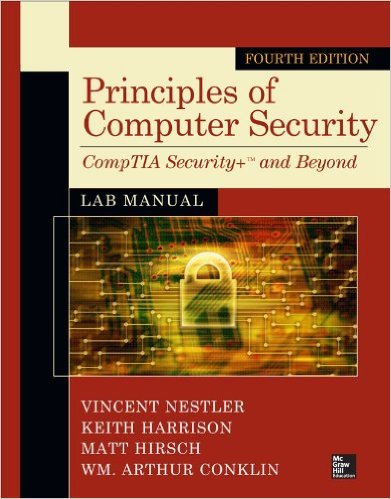 [内容简介]
[内容简介]
Practice the Computer Security Skills You Need to Succeed!
- 40+ lab exercises challenge you to solve problems based on realistic case studies
- Step-by-step scenarios require you to think critically
- Lab analysis tests measure your understanding of lab results
- Key term quizzes help build your vocabulary
- Labs can be performed on a Windows, Linux, or Mac platform with the use of virtual machines
In this Lab Manual, you'll practice
- Configuring workstation network connectivity
- Analyzing network communication
- Establishing secure network application communication using TCP/IP protocols
- Penetration testing with Nmap, metasploit, password cracking, Cobalt Strike, and other tools
- Defending against network application attacks, including SQL injection, web browser exploits, and email attacks
- Combatting Trojans, man-in-the-middle attacks, and steganography
- Hardening a host computer, using antivirus applications, and configuring firewalls
- Securing network communications with encryption, secure shell (SSH), secure copy (SCP), certificates, SSL, and IPsec
- Preparing for and detecting attacks
- Backing up and restoring data
- Handling digital forensics and incident response
Instructor resources available:
- This lab manual supplements the textbook Principles of Computer Security, Fourth Edition, which is available separately
- Virtual machine files
- Solutions to the labs are not included in the book and are only available to adopting instructors
[目录]
Part I: Networking Basics: How Do Networks Work
1. Workstation Network Configuration and Connectivity
2. Network Transports
3. Network Applications
Part II: Vulnerabilities and Threats--How Can Systems Be Compromised
4. Penetration Testing
5. Attacks--Attacks Against Applications
6. Escalating Privilege--Sniffing, Keylogging, Password-Cracking Attacks
Part III: Prevention: How Do We Prevent Harm to Systems
7. Hardening the Host Computer
8. Securing Network Communications
Part IV: Detection and Response: How Do We Detect and Respond to Attacks
9. Preparing for and Detecting Attacks
10. Digital Forensics

 新书报道
新书报道